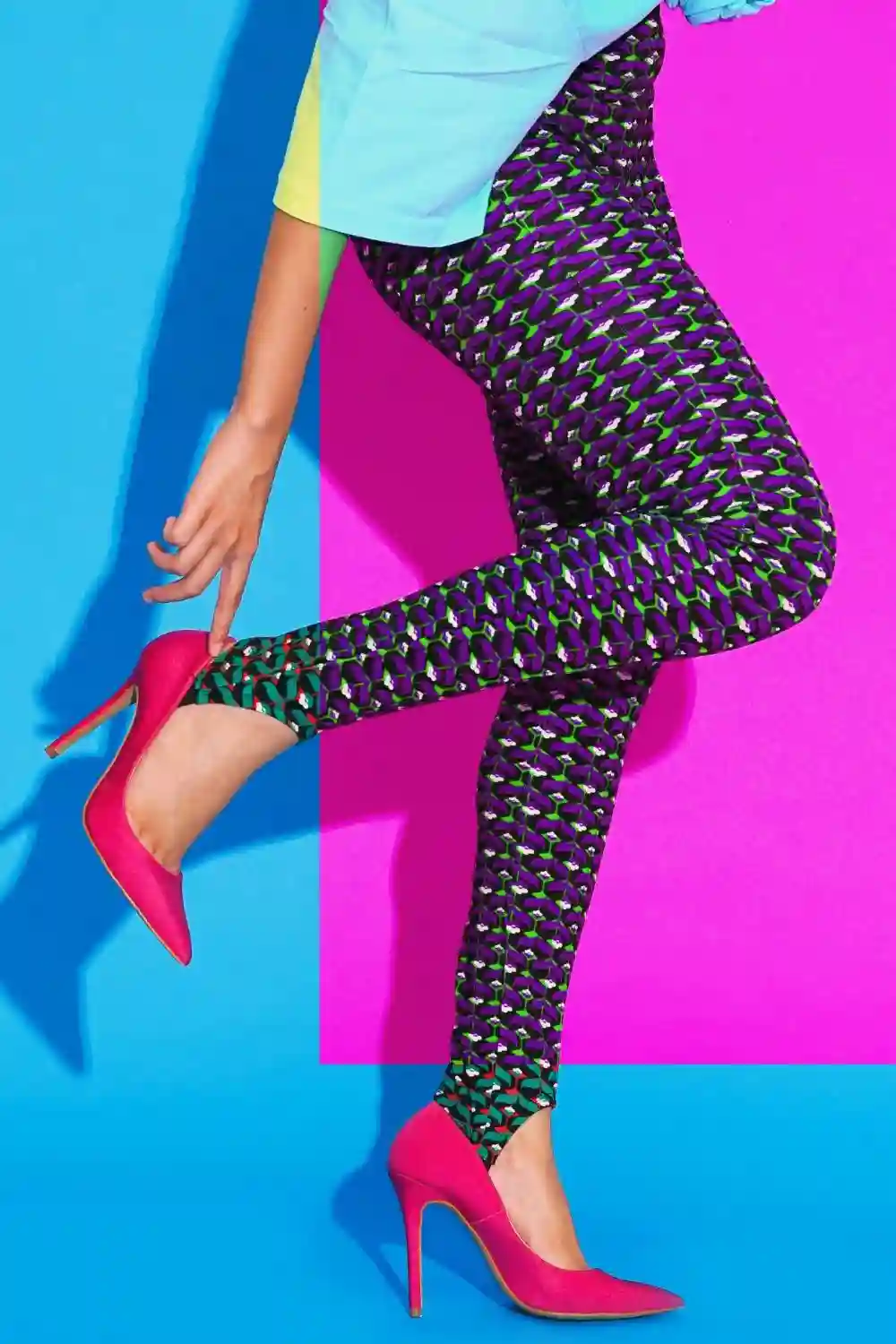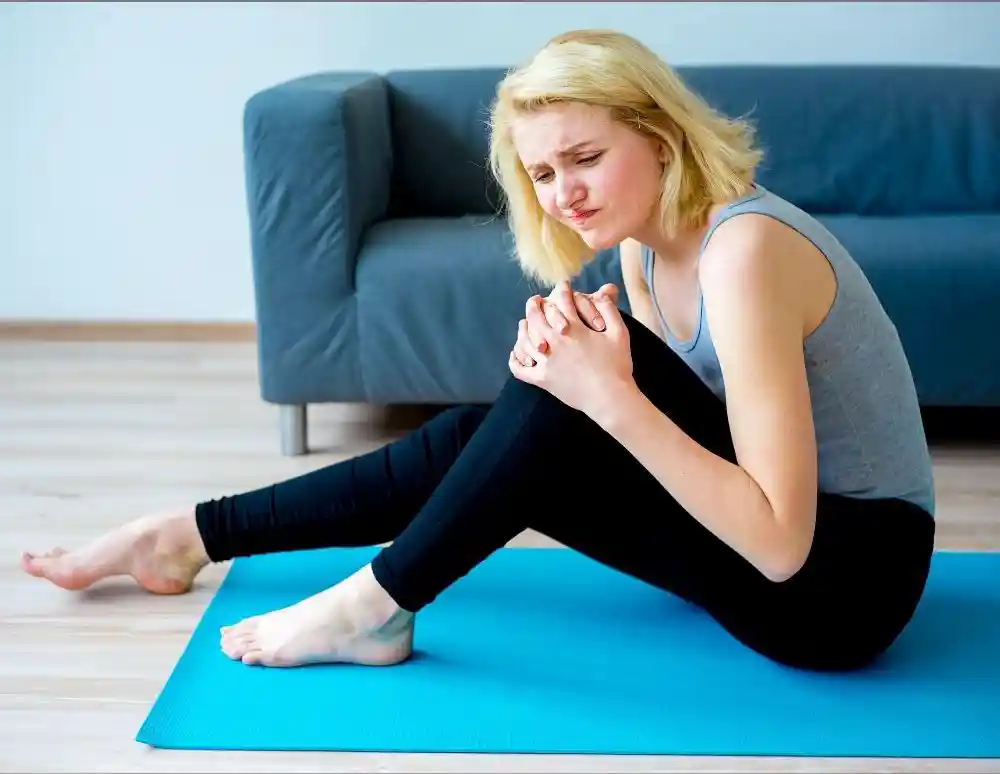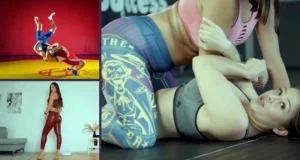Have you ever felt pain or discomfort from your leg hair when wearing leggings? You’re not alone. For many women, tight pants can cause burning, itching, or tugging below the knee.
But what exactly is it about leggings that irritate those delicate hairs? The culprit behind this common plight is friction. As legs move about, microscopic clashes between fuzz and fabric set restless roots ablaze. Too-tight leggings constrict strands in strange positions against the skin. This abnormal scrunching and sliding causes raw distress.
Even natural wear, like walking freely, stirs discomfort without some slack. Learn how to tame unruly leggings and keep leg lions resting peacefully with simple solutions to spare yourself future prickly problems.
Reasons for leg hair hurt when wearing leggings?
Friction
The friction from your leg hair rubbing on tight leggings causes that pain. When you move, your hairy legs slide against the material repeatedly. This constant rubbing irritates the tiny roots keeping hairs in place.
Tighter leggings make more back-and-forth movement between legs and pants. Thicker or longer leg fuzz catches on fabric more too. Even sweat makes it uncomfortable because damp skin slips around extra.
Try looser-fitting pants or shaving so your legs slide smoothly without poking and tingling to reduce annoyance.

Tightness of Leggings
When leggings squeeze legs very closely, it makes hair rub lots against the fabric. The hard, constant swishing back and forth bothered the thin skin and hair roots.
The snug material wrapped tightly on the legs doesn’t allow any space between the skin and pants. This zero gap maximizes friction with each step you take.
To minimize discomfort, try loosening the waistband one size up or down. Breathing room prevents hair from sandpapering the leg all day in confining leggings. Looser wear lets legs move freely without always dragging leg fuzz on tight pants.
Opposite Hair Direction
Tight pants pull against the natural path leg hair grows. Each strand likes to point down, but pressed-on clothes push back up. This gives a trapping feeling to the tiny roots holding hair in the skin.
It tweaks and tickles the holes follicles live in. When strands bend the wrong way, it rubs where they attach below. This tugging irks the skin around follicles even more when hair is longer and fuller.
Loose trousers let fuzzy legs lay as they naturally lay without stressing strands like leggings.
Ingrown Hairs
Some leg hair likes curling around itself beneath the skin. This traps strands to grow inward instead of out. These ingrown hairs cause itchy, sore bumps. Leggings squeeze legs in a way making this comfier problem awful.
When fuzz gets pressed hard against the skin by tight pants, it digs stray hairs deeper into sore spots they already started. This pushes discomfort to a new painful level there.
To prevent pain from worsening, loosen the leggings before irritation really blossoms from ingrown strands of leggings shoved back against the skin.
Tugging
Tight clothes yank on the leg fur in unusual ways when you walk. This snags hairs and pulls them in spots they’re not used to. The tiny roots keeping fuzz attached really feel this strange stretching out of place.
Any extra pull tickles and teases these tender follicles where strands sprout from. Too much tugging also pressures the sensitive skin surrounding each hair hole.
To relieve this unpleasant plucking, loosen leggings or find pants that glide instead of grasping your leg fuzz so harshly.
Sensitivity After Shaving
Newly shaved legs leave every little hair socket open and sensitive. Before they have time to adjust, tight pants brush directly against these bare follicles.
Each step aggravates this mild irritation into real pain. Legging fabric scratches the raw, newly exposed spots worse than legs with their natural fuzz barrier. To avoid the sting, give the skin time to regain its toughness after removing hair.
Once fuzz roots no longer feel ultra-tender, leggings can nestle close without nudging such a wincing sensitivity.
Hair Follicle Irritation
The skin around each hair and the tiny holes they sprout from feel the burn when leggings squeeze too hard. Constant rubbing from tight fabric irritates these delicate follicles all day.
Even the slightest nudge causes a sting in the places fuzz takes root. The material scratched against the leg like sandpaper, inflaming the sensitive areas wherever strands emerge.
To stop the ache, leather pants are breathier and let fuzz congruously sit instead of needling follicles mercilessly with each step. More slack protects the tender, stretched skin and always keeps hair company.
Individual Sensitivity
Not everyone’s legs react the same to tight pants. Some feel itchy pain, while others don’t mind at all.
Thick, bushy, or extra long hairs on legs may make one girl cringe when leggings tug. But another girl with soft, thin fuzz won’t share her pain. Fuzzy length and coarseness cause differing soreness.
Each girl’s agony limit also matters in how much pinch bothers her. A low tolerance guarantees distress for one but not the other. So different hair types plus individual hurt levels guarantee leggings affect people uniquely.

Lack of Hair Conditioning
Unprepared leg fur gets aggravated easier than fur primed to protect itself. Conditioned strands stay slick and resistant even when fabrics scrunch close.
A good leave-in cream keeps hair soft and pliant no matter how pants press. But naked fuzz lacking moisture guard feels pant material harshly. Each rub pain unconditioned. Taking time to treat legs keeps strands safe against soreness later.
Softened hair handles tights smoothly while tender fuzz smarts from pants, same as sandpaper. It’s smart preventing prevent pain with weekly conditioner care for the legs.
Risk of Infection
Leggings may pinch hairs deep enough under the skin to produce infected ingrown follicles if left neglected. Trapped bacteria thrive inside red bumps full of pus or drained fluid. Fever and inflammation accompany this dangerous complication.
The body’s natural defenses fight hard to avoid invading germs but need help from early treatment. Constant legging-wear risks allowing infections to begin without noticing curled hairs.
Care for trapped strands before entering the tiniest skin openings to prevent this urgent issue and preserve continued health.
How to stop my leg hair from hurting
Tired of your leg fur rebellion? Follow these easy tricks to tame the tingles:
Exfoliate to Enlighten
Dead skin and dull dust choke follicles daily. An invigorating scrub polishes pores perfectly clean once weekly. Soft fingers or store scrubs slough off skin shed speedily without the sting. Shine before below-the-knee beauty care for easy hair emergence and no ingrown agony.
Lather on the Love
Keeping strands saturated soothes soreness, sure to stir. Slick skin with silicone-based salves meant for limbs post-preening. Coconut, olive, and aloe extracts especially ease and appease flustered fuzz. Remember – conditioner coddles consistently to conquer discomfort overall.
Garments that Gently Garb
Some cloth clings coarsely, catching every wisp of wayward fur. Choose clothes to cut looser for legs so the lining lays lightly, releasing roots to relax and racks to route regularly rightwards. Try wearing two layers if needed for a friction-fighting feel fantastic.
Shaving Smooth and Simple
Razoring? Glide gently in hair favoring fashion with adequate foam for an amiable experience. swap often and avoid over-actively in problem places prone to Post-Plucking Pains. Laser or waxing can work wonders, too, for women wary of warped growth afterward.
Pop Pests Promptly
Ingrowns itch intensely if ignored – inflammatory infections could even arise! At first pimple sight, apply a warm compress, then antibiotics if there is no instant improvement. Doctoral drainage may be for deeper, darkened dilemmas to dodge.
Choose the Right Razor
Opt for a sharp, multi-blade razor to minimize tugging. Dulled blades are more likely to snag and irritate hairs. Replace disposable razors every 4-7 shaves.
Go With the Grain
Always shave in the direction hair grows to avoid ingrown. Shaving against the grain can cut beneath the surface and leave sharp ends prone to becoming trapped.
Take Your Time
No need to rush! Slow, gentle strokes allow the razor to smoothly slice strands at skin level rather than pulling. One to two passes are plenty for most hair lengths.
Moisturize After
Slather on a rich lotion while your skin is still damp from your shower. This seals in hydration to keep newly shorn hair follicles supple and flexible. Look for formulas with hydrating oils or shea butter.
Give it a Break.
Take periodic “waxations” from shaving to allow hair and skin recovery time. Lasering provides long-term relief by slowing regrowth. Waxing gives smooth results for 3-5 weeks.
Wear Liners
Consider wearing pantyhose, tights or knee-high socks under leggings. The extra layer buffers hair from fabric friction while you’re active.
Massage Muscle Soreness
Soothe achy legs with light self-massage using moisturizer. Gentle kneading releases tension that can exacerbate discomfort when combined with irritated hair follicles.
Stay on Schedule
Use an exfoliant weekly and moisturize daily to maintain soft, hydrated skin and hair that flexes freely without pain. Consistency is key for comfy calves!

Summary
Tight leggings can lead to discomfort or pain from leg hair due to friction. The constant rubbing between leg hair and fabric irritates the hair follicles and causes discomfort.
Tight leggings exacerbate the issue by constraining the strands against the skin and pulling them in unusual directions—ingrown hairs, familiar with tight pants, trap strands to grow inward and intensify the discomfort.
Sensitivity after shaving worsens the pain, as does the irritation of hair follicles from constant rubbing. The extent of discomfort varies based on individual sensitivity and hair characteristics.
To alleviate the discomfort, consider exfoliating weekly and using silicone-based salves to soothe the skin. Opt for looser-fitting garments to reduce friction, and shave gently toward hair growth.
Applying warm compresses and antibiotics can help with ingrown hairs. Using the right razor, moisturizing after shaving, and taking breaks from shaving can provide relief. Adding an extra layer, like pantyhose or knee-high socks, can reduce friction when wearing leggings.
Gentle self-massage with moisturizer can soothe sore muscles and discomfort. Consistency in exfoliation and moisturizing maintains comfortable legs in the long run.
FAQ
Why do my leg hairs hurt when I get goosebumps?
Goosebumps can lead to discomfort in leg hair due to hair follicle constriction. When hair stands up, it can be pushed against the grain by tight clothes. Shaved hair might be more sensitive to cold, intensifying the discomfort. In rare cases, goosebumps can be linked to panniculitis, causing painful nodules. To ease discomfort, keep leg hair moisturized and conditioned. Note that applying cold balms and moisturizers can also induce goosebumps.
Why does my leg hair hurt when I wear tight socks?
When you wear tight socks, the fabric can pull on your leg hairs, causing discomfort or even pain. The hairs on your body have tiny muscles attached to them. When they are pulled in an unnatural or uncomfortable position for an extended period, it can lead to muscle soreness. This can manifest as a sensation of pain or discomfort in the hair follicles. The friction between the fabric and the hairs can exacerbate this sensation.
How do you wear tights with hairy legs?
You have a few choices to consider when wearing tights with hairy legs. You can remove the leg hair by shaving, waxing, or using hair removal creams for a smoother appearance and reduced discomfort from tights pulling on the hair. Alternatively, if you prefer to keep your leg hair, you can go for opaque or thicker tights, which provide better coverage and make the hair less noticeable. Nude dance tights are another option designed for athletes, offering improved coverage and minimizing the visibility of leg hair; choose a shade that matches your skin tone. Dark-colored tights, like black or navy, can also help disguise leg hair against the fabric, granting you the confidence to wear tights comfortably.
Why do I lose hair on my legs when I wear tight pants?
Wearing tight pants or other tight-fitting clothing can potentially contribute to hair loss on your legs. This condition is known as frictional alopecia. The constant rubbing and friction between the fabric and your leg hair can cause hair breakage or damage the hair follicles, leading to hair loss. This frictional alopecia can occur from tight pants and wearing tight socks or other clothing items that create continuous friction against the leg hair.
Why do people put hairspray on their tights?
People may put hairspray on their tights to prevent runs or snags in the fabric. The idea behind this practice is that the hairspray creates a thin layer that bonds the fibers of the tights together, making them less likely to develop runs or tears. By reinforcing the tights with hairspray, they hope to extend the lifespan of their tights and avoid the need for frequent replacements.



